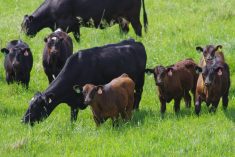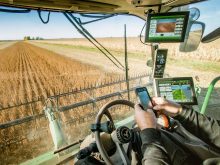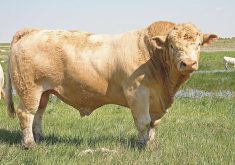Agricultural societies are the backbone of many communities – even if many Albertans don’t realize it.
“Ag societies tend to be the greatest-kept secret in many rural communities,” said Tim Carson, executive director of the Alberta Association of Agricultural Societies.
“The volunteers themselves are not in it for glory. They are in it because they have an internal mechanism that wants to help society. They want to make a difference and they’re not into it for the personal gratification.”
Read Also

Grazing ‘sweet spot’ boosts pasture performance
Timing-focused approach to pasture management touted to boost forage growth, livestock gains while also cutting farmer labour and inputs
Ag societies range from urban bodies such as Edmonton’s Northlands and the Calgary Stampede, down to small rural societies with less than 100 people. There are seven regional societies (Grand Prairie, Lloydminster, Medicine Hat, Camrose, Red Deer, Olds and Lethbridge) and Carson’s organization, created in 1947, acts as the umbrella group for 295 agricultural societies.
“As a provincial organization, we support 25,000 volunteers on the ground and about 3,500 at the board level,” he said.
Ag societies, volunteer run and usually with a board of 12 directors, own and operate over 700 facilities in rural Alberta, including riding facilities, auction marts, hockey and curling rinks, and community halls, said Carson.
“The mandate of an ag society is to promote agriculture and to enhance the quality of persons living in an agricultural community,” he said. “This mandate allows ag societies a wide variety of options to do what’s necessary in their particular community.”
Many run the local fair, gymkhana or rodeo, or support local 4-H programs, which spin off into other events, such as the Communities in Bloom competition.
“They have the opportunity to have a very strong impact on rural growth,” said Carson.
About 60 per cent of the farmers’ markets in the province are hosted by agricultural societies, he noted.
“The one thing they all have in common is a tremendous passion for the community,” said Carson. “The community is bigger than the municipal address. It’s not about the town, it’s about the people who utilize that region. Not all ag societies are specifically driven by agriculture, they’re driven by quality of life.”
The Alberta Association of Agricultural Societies provides governance training, board development work, bylaw review, and many other administrative and organizational resources.
“We are an advocate for ag societies with government and we have a tremendous relationship with the Department of Agriculture,” said Carson. “We work with government to support the ag societies and we also work as a provincial association with corporate Alberta.”
Many societies are facing challenges such as operating and maintaining aging facilities and attracting new volunteers in a time when people complain of being too busy and when rural populations are declining.
“In several cases, it’s been stated that youth don’t want to volunteer, but we have seen that’s not really the case,” said Carson. “They don’t want to volunteer in the same fashion.”
Volunteers need to feel their time is being used properly and not wasted. As a result, his association is focusing on helping ag societies run more effectively and encouraging them to raise their profile.
“Ag societies need to blow their own horns and have the community around them understand what they’re capable of,” said Carson.
———
“Agsocietiesneedto blowtheirownhorns andhavethecommunity aroundthemunderstand whatthey’recapableof.”
Tim Carson















